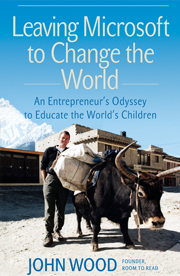Nucleus Research Drops by for a Visit
Ian Campbell (president) and Rebecca Wettemann (VP of research) kindly graced our offices today to share pizza and their insights on the marketplace. I fear they got to eat precious little pizza as we peppered them with questions about how they work and what sets them apart from other analyst firms.
“We’re known for our investigative approach,” Ian explained. “Other firms out there are big on vision or strategy, but we’ve built our reputation on our case studies with a spreadsheet in the back.”
Rebecca added, “We’ve literally written thousands of case studies.”
Nucleus is known for case studies with nitty gritty ROI data on actual deployments. The firm reports it is the only technology research firm that is registered with the National Association of State Boards of Accountancy to provide ROI training to Certified Public Accountants. Ian notes, “CFOs find our case studies to be fully credible. The process is really rigorous.”
We know these guys because they’re frequently quoted in the business press. They’ve developed a reputation for independence and integrity so business reporters count on them as reliable sources. And Nucleus isn’t afraid to kick up some dust. You may recall that the firm lit up the blogosphere earlier this year when they took issue with some data in an SAP ad. From the press release:
Nucleus Research, a global provider of IT research and advisory services, today announced a review of publicly-held companies listed by SAP on its Web site. Nucleus found that, contrary to SAP’s advertising claim that its customers are 32 percent more profitable than their peers, SAP customers were in fact 20 percent less profitable than their peers. SAP customers had an average ROE of 12.6 percent versus an industry average of 15.7 percent.
More recently, Nucleus was behind the amusing study that found one in three employees writes down passwords. Nucleus analyst David O’Connell commented in the firm’s press release: “It’s like leaving the key under the mat or in the flower box. Companies looking to ensure security should look beyond passwords to other authentication strategies.”
The firm’s experience is broad, spanning CRM, ERP, supply chain, business intelligence and SOA. Rebecca notes that predictive analytics is a hot area right now, and implementations are getting cheaper and easier for the average user to understand.
Nucleus has run the ROI Awards for the past four years. If you’re working for a company or with a customer who has implemented a successful IT project and can detail software, hardware, personnel and training costs, this looks like a win that would give you great bragging rights.
We always appreciate it when folks take the time to stop by. We learn something new every time.




